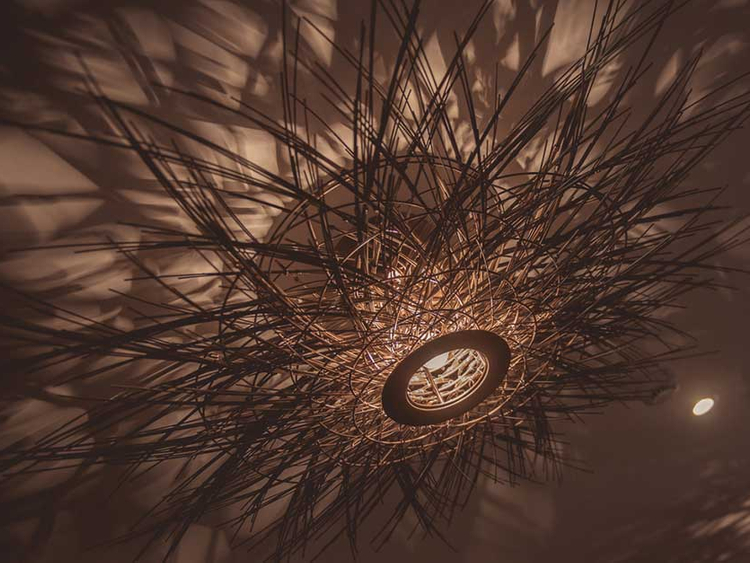He is one of the brightest names in hospitality design, a pioneer of restaurant design. Adam Tihany, the American interior designer, is the creative genius behind some of the most luxurious getaways known to man.
As we admire his latest project, the Four Seasons Hotel DIFC, Tihany reflects on his stellar career.

Take a cue from Four Seasons DIFC as invest in the warm tones of chocolate and gold
“My first hotel project was a DoubleTree Hotel in Santa Clara in 1984,” he recalls. It was just a few years after he had designed one of the first grand cafes in New York, La Coupole, where he had the opportunity to inform the venue all round. Not limited to designing the architecture, interiors, lighting and graphics, Tihany overlooked the uniforms and even the china. “This 360 degree approach is really the essence of my design philosophy — every detail has to be attuned to the needs and comforts of others. My thinking hasn’t changed from the early days, though with time and experience, we’ve been able to refine and redefine some of the industries standards of excellence.”
Though the sophistication and attention to detail of the hotel nods a well-recognised brand identity, Tihany designed the DIFC property for its scale, location and clientele.
“It is a very intimate, inward looking urban expression of its community,” he says. “The hotel resonates a hand-crafted, bespoke quality and is custom designed down to the commissioned art.”
Few industries are as fickle as hospitality, trends come and go, many a times rendering the hottest of hotspots dated and forgotten. Tihany sidesteps the pitfalls of following trends with a timeless approach to design.
“I’d much rather focus on things that become new standards. As such, we all witnessed the birth of the boutique hotel, design hotel, art hotel, designer label hotel and so on. They all served their purpose in furthering the industry, infusing it with energy and creativity,” he says. “The most significant transformation, in my view, was ending the effort to try and make the hotel a ‘home away from home’. They day the hoteliers realised that it is impossible to compete with one’s home was the birthday of a new hotel design ethos that will ride over all trends”.
While the hotel industry has given up trying to recreate a home for its guests, hospitality design is influencing residential interiors all the more. Here are some tips to recreate the timeless elegance of Four Seasons Hotel, DIFC, in your own home.
This year’s colours of choice might be pastel blues and pinks, but if you are after an element of grown up, time defying warmth that instantly makes everyone feel welcome and comfy, follow Tihany's lead and appoint your living room in shades of brown:

Layer velvets with stone, prints with colour
This muted colour palette works brilliantly across materials — flooring, wall covering, soft furnishings and accessories. From light Crema Marfil stones and the coffee hues of Dark Emperador, to lush carpets in moss browns, appoint your space in shades of latte.
Gold, ink blues, even black works wonderfully with this palette, adding a layer of understated chic. For maximum impact, add a beautiful mirror and keep your accessories to the gold and brass family.
Layering is key to any luxe environment. Materials, finishes, even colours that are complimentary — as well as in contrast — to the main theme add intrigue.
To get layering right, you have to make one inspired decision — your accent colour. Be in on the wallpaper or a feature carpet, this colour will not only define the other colours you can play with in the space, but also lead you to the different finishes that add to the look. From velvet cushions against leather chairs or a play of prints and patterns, there are big and small design gestures that can help you layer your room to perfection. Best of all? These elements needs not be long term commitments. Layering is the best way to play with seasonal trends without guilt.

Retro refined - simplified takes on classical designs instantly updates them for today's living
Invest in design pieces that hark back to the good old days when retro was current. Take off the bulk and chintz typically associated with the era and you have furniture that will last you a lifetime. Anoint your chesterfield sofa with an antique design inspired rug and pared down wall claddings in shades of oak and mahogany. To truly bring this trend to life, invest in light stone flooring with dark border panels and black wood flooring laid in the classic herringbone pattern. Add a few burnished brass trims and finish off the look with a selection of contemporary design pieces to balance the retro vibe.










